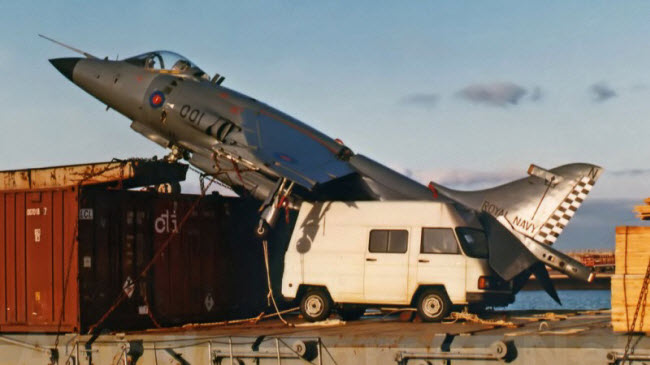Aircraft carriers are designed to function as massive floating airports in the middle of the ocean, where military jets take off to carry out their missions and return to land after completing them. Due to their unique role in warfare, aircraft carriers are built with very specific features that distinguish them from any other type of ship, whether civilian or military. However, one British pilot had a different experience when he skillfully landed his fighter jet on the deck of a container ship after suffering a critical navigational failure. This extraordinary event became known as the “Alraigo Incident.”
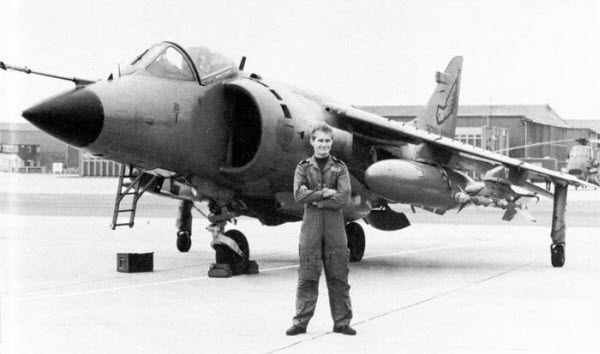
This incident occurred nearly 40 years ago, in June 1983. Lieutenant Ian Watson, a British Royal Navy pilot, took off in his Harrier fighter jet from the aircraft carrier HMS Illustrious for a NATO training mission off the coast of Portugal. Accompanied by another aircraft, Watson was tasked with finding a French aircraft carrier in a simulated combat scenario. The exercise involved both planes flying under “radio silence” and with their radars turned off to mimic real combat conditions, reducing the chances of being detected by an “enemy.”
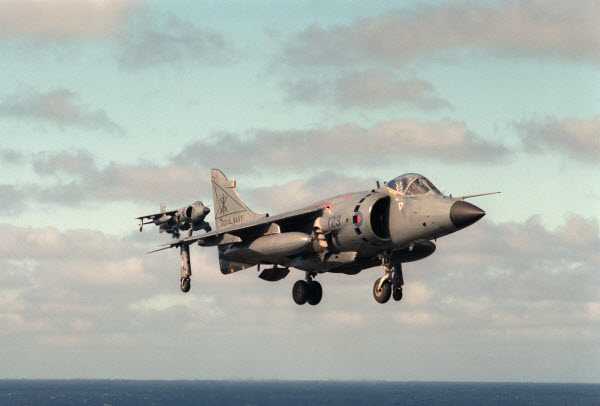
While the mission unfolded, a Spanish container ship called Alraigo was passing through the same area en route to deliver routine cargo to Tenerife, in the Canary Islands. Watson, having completed his part of the search, descended and headed toward the pre-arranged rendezvous point to rejoin his wingman. But things began to go awry when he realized his partner wasn’t showing up. To make matters worse, Watson’s fuel was critically low, forcing him to consider returning to the HMS Illustrious. However, when he tried to locate the carrier using his navigation systems, nothing worked. His inertial navigation system (INS) failed, and the radar didn’t detect anything. Even his radio had malfunctioned, leaving him completely cut off from all communication.
With fuel dwindling and no way to find his carrier, Watson had to make a quick decision. He recalled that commercial shipping lanes were nearby and soon spotted a vessel on his radar—the Spanish container ship Alraigo. In a desperate bid to save his life and jet, Watson headed towards it. His fuel gauge indicated that he had just about a minute of flight time left. Initially, his plan was to fly low over the ship to attract attention so that the crew could rescue him. But as he approached, Watson noticed that the containers on top of the ship formed a relatively flat surface, similar to the deck of an oil tanker.
Without hesitation, Watson decided to attempt the near-impossible: landing his fighter jet on a moving container ship. He slowed his plane down as much as possible and carefully maneuvered it to hover over the containers. However, just as he managed to touch down, the wet containers caused the Harrier to start sliding backward, and the ship was still moving. Despite the precarious situation, Watson skillfully managed to bring the aircraft to a halt, resting against a delivery vehicle that was bound for a flower shop in the Canary Islands.
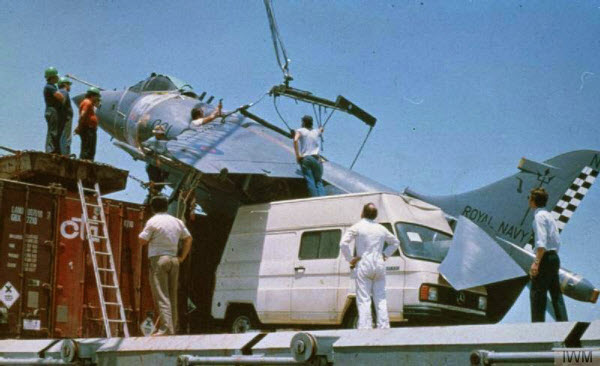
The landing was miraculous, and both Watson and his jet were safe. The ship’s captain contacted British authorities to report the incident, and the British government requested that the captain turn the ship around and return Watson and his plane. The captain refused, citing his shipping schedule and informing the UK that they would be arriving in Tenerife in four days. When the ship docked, Watson and his Harrier were greeted by an enthusiastic crowd of locals and reporters, who relished the extraordinary story.
The Alraigo crew received a substantial reward for their role in saving the pilot and the jet—£570,000 (about $1.14 million in 1983). As for Ian Watson, he was lucky to be alive. Upon his return to the HMS Illustrious, Watson faced an investigation into the incident, but no charges were filed against him. Once the carrier returned home, he was subjected to further inquiry, but in 2007, the British National Archives released the findings of the investigation, which concluded that the incident was primarily due to Watson’s inexperience. His commanders were also blamed for assigning him to a mission with a plane that was not fully operational, given the radio failure. Watson received a formal reprimand and was temporarily assigned a desk job, though he later returned to active duty as a fighter pilot, accumulating over 2,000 flight hours in the Harrier and an additional 900 hours in F/A-18s before retiring in 1996.
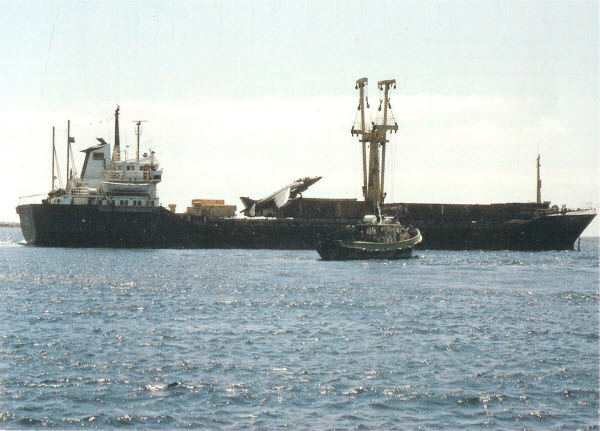
Reflecting on the Alraigo incident years later, Watson stated that the media had blown the story out of proportion, causing unnecessary embarrassment to the Royal Navy. He maintained that he didn’t want to blame anyone for what had happened.
This fascinating episode remains a unique moment in aviation history, a testament to the unpredictability of life at sea and in the air, and a reminder that even the most sophisticated technology sometimes requires a bit of human ingenuity to save the day.
